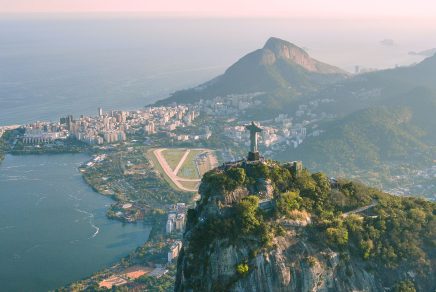Planning a getaway and thinking about Rio de Janeiro? You’re in for a treat! A trip to Brazil means stepping into a world of vibrant colours, incredible sights and unforgettable experiences. The country’s most iconic city is calling your name with its legendary beaches, lush green mountains and unique, vibrant Carioca culture. To make the most of this dazzling kaleidoscope of adventures, our guide to the best things to do in Rio de Janeiro reveals the must-see attractions and hidden gems for an unforgettable stay. With everything from the bohemian area of Santa Teresa to the beautiful beaches and the best places to sample authentic Brazilian dishes, these are the must-visits.
What are the best things to do in Rio de Janeiro? The Rio Carnival, of course!
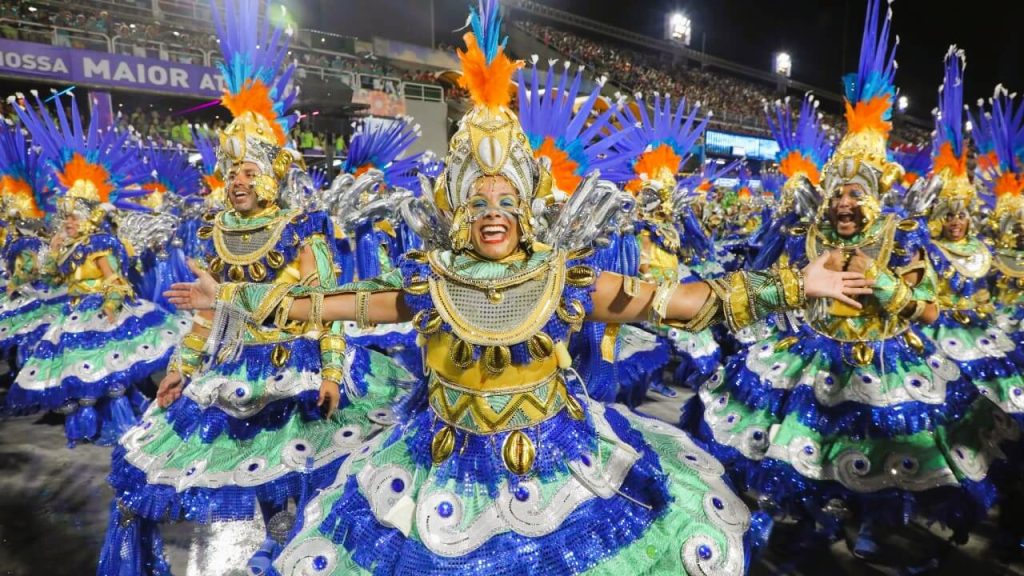
Wondering what to do in Rio in February or March? The Rio Carnival is an absolute must!
It’s the most flamboyant and celebrated event in the city, attracting millions of visitors from all over the world. More than just a party, the Carnival is an institution, an explosion of colors, sounds, and joy. For several days, the entire city vibrates to the rhythm of the lavish parades of the samba schools at the Sambadrome, where thousands of dancers, musicians, and artists showcase dazzling costumes and perfectly choreographed routines. Outside the Sambadrome, the “blocos de rua” (street blocks) take over the neighborhoods, transforming every corner into a spontaneous party. It’s a total immersion in Carioca culture, a celebration of life that absolutely must be on your list if your trip to Brazil coincides with those days.
Admire the View from Sugarloaf Mountain
Sugarloaf Mountain, or Pão de Açúcar, is one of the most recognizable icons of Rio de Janeiro and an unmissable attraction. The cable car ascent to its summit offers a breathtaking view of the city and the Guanabara Bay. The first stop, Morro da Urca, already provides a spectacular glimpse of this area and dining options. From there, a second cable car takes you to the summit of Sugarloaf Mountain, where the 360-degree panorama is simply stunning, especially at sunset. Watching the city lights illuminate from this height is a unique experience that will be etched in your memory of your trip to Brazil.
Maracanã Stadium
For sports enthusiasts, the Maracanã is a mandatory pilgrimage. This legendary stadium has hosted two FIFA World Cup finals and is the beating heart of Brazilian football. You can take a guided tour of the locker rooms, the players’ tunnel, and the field to feel the history and passion that drives Brazil, and even combine it with attending a real match, if the schedule permits. It’s a unique experience and a deep immersion in Carioca culture. The energy of the fans is contagious!
Christ the Redeemer
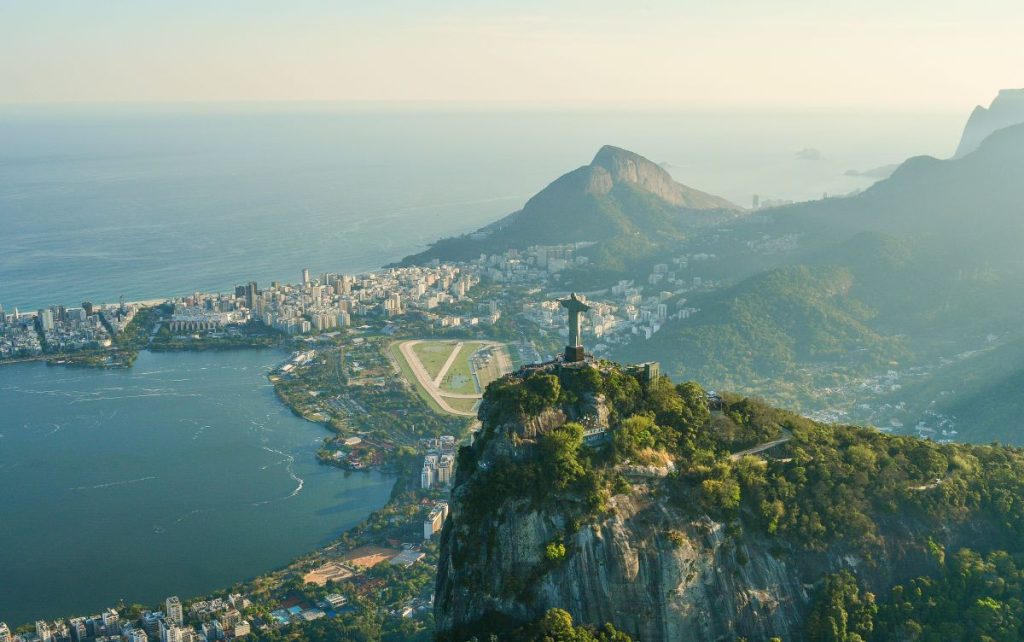
Perched atop Corcovado, Christ the Redeemer is a universal symbol of peace and one of the modern wonders of the world. The ascent to this 38-meter-tall icon, whether by cog train or even on foot, is an experience in itself. From the promontory located on the summit of Corcovado Mountain, 710 meters above sea level, a breathtaking view of the city will unfold before you, including Guanabara Bay, Sugarloaf Mountain, and the beaches.
Santa Teresa Neighborhood and its Selarón Steps
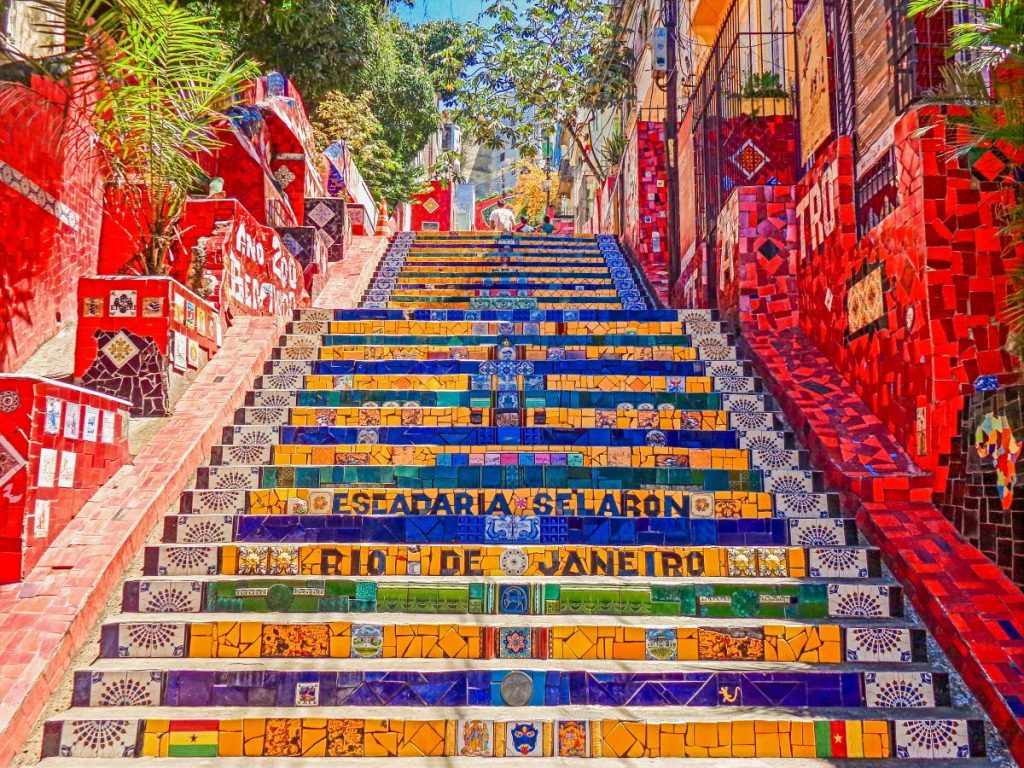
The Santa Teresa neighborhood is a timeless escape, a bohemian haven with its charming colonial architecture and winding cobblestone streets. This area is brimming with typical bars and restaurants, boutiques, artists’ studios, and retro cinemas. It’s a true paradise for aimless strolling! Don’t miss the Escadaria Selarón, a monumental staircase transformed into a vibrant work of art by Chilean artist Jorge Selarón, covered with thousands of colorful tiles from all over the world.
Favela tour
Visiting a favela like Rocinha is a unique experience that goes beyond mere tourism. It’s an essential step to understanding the social complexity and resilience of Rio de Janeiro. A good local guide is crucial for this tour. They’ll ensure your safety and provide the knowledge to understand the daily lives of residents, their challenges, and their initiatives. Far from the clichés, favelas are dynamic and vital communities, and this area offers a more nuanced perspective on the city.
Rio’s beaches: Leme, Copacabana, and Ipanema
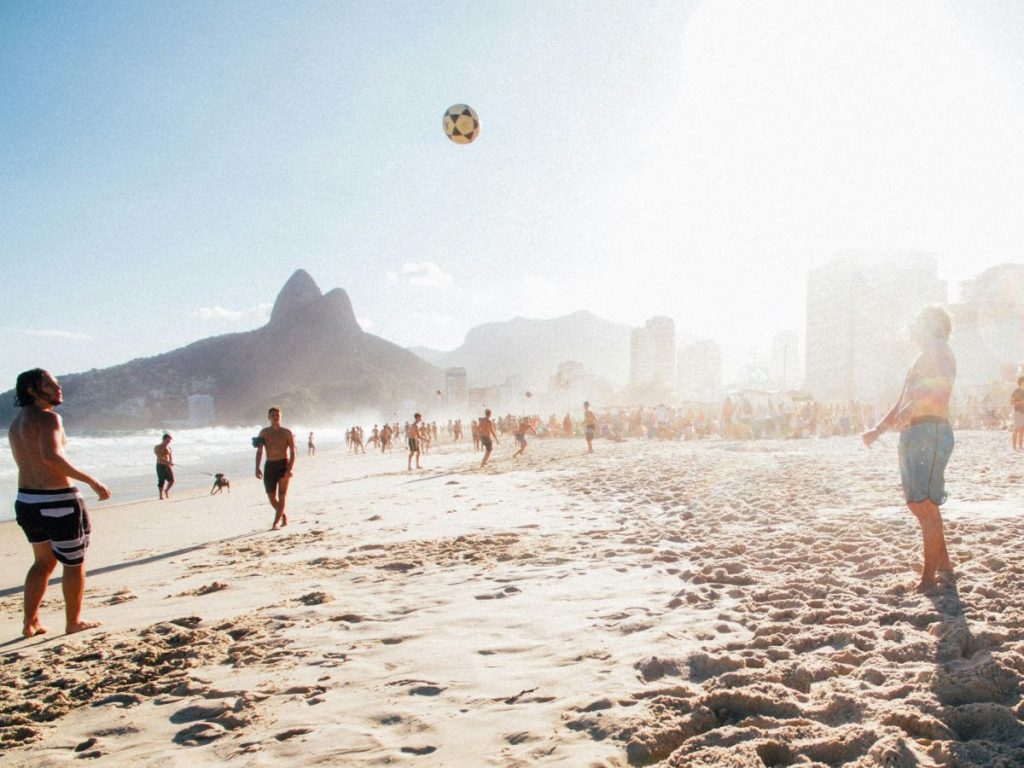
The beaches are the soul of Rio de Janeiro, and the famous Calçadão (the seaside promenade) that connects them is a vibrant area to be! Walking along the seaside on Avenida Atlântica, watching the movement of the Atlantic Ocean waves, observing locals gossiping while sunbathing, or listening to children playing ball—this is living the very essence of Rio de Janeiro.
- Leme Beach: Located at the eastern end of Copacabana, Leme Beach is often quieter and more family-friendly. It’s a peaceful spot to enjoy the sun and sea, with a breathtaking view of Sugarloaf Mountain in the distance. Ideal for families looking for a more relaxed ambiance.
- Copacabana Beach: Emblematic of Carioca culture, Copacabana is world-famous. With its long curve of fine sand and lively promenade, it’s a place where the activity never stops. You’ll see beach vendors, football and volleyball players, and an eclectic mix of locals and tourists. Its Art Deco architecture and constant animation make it a unique experience.
- Ipanema Beach: Just after Copacabana, separated by Arpoador, lies the chic and relaxed Ipanema Beach. Famous for its spectacular sunsets over the “Dois Irmãos” (Two Brothers) rock formation and immortalized by the song “Garota de Ipanema,” it’s a place where elegance and casualness meet. The lifeguard posts (postos) divide the beach into sections with distinct ambiances.
Brazilian dishes to eat in Rio

A trip to Brazil is also a culinary journey! Brazilian cuisine is rich and varied, influenced for centuries by indigenous, African, and European contributions through successive migrations. Here are some delights you absolutely must try during your stay in Rio de Janeiro.
- Coxinhas de frango: Crispy, teardrop-shaped savory fritters, filled with creamy shredded chicken. Perfect for a quick snack.
- Brigadeiro: A small ball of chocolate and condensed milk, rolled in chocolate sprinkles. An irresistible classic.
- Pão de queijo: Small cheese breads made from tapioca flour, crispy on the outside and soft on the inside. Ideal for breakfast.
- Salgadinhos: A variety of small savory bites, perfect for an aperitif. This street food is sold everywhere and is delicious.
- Feijoada: The Brazilian national dish. A hearty stew of black beans and various pork meats, served with rice, farofa (toasted manioc flour), and collard greens.
- Farofa: A toasted manioc flour topping, often served with feijoada or other meat dishes.
- Galletto al primo: Juicy roasted chicken, often served in churrascarias or typical restaurants.
- Empadas: Small savory pies filled with various fillings such as chicken, shrimp, or heart of palm.
- Churrasco: Brazilian-style grilled meat. A feast of different cuts of meat cooked to perfection on skewers.
- Açaí: A superfood from the Amazon, served as a frozen puree, often topped with granola and fruits. Perfect for cooling off.
Urca neighborhood
Located at the foot of Sugarloaf Mountain, the Urca neighborhood is a haven of peace and tranquility. Away from the bustle of more touristy areas, Urca offers a charming ambiance with its quiet streets, colorful houses, and small Praia da Fora beach. It’s an ideal place for an evening stroll, enjoying the sea breeze, and admiring the view of the city from the bay. The Urca Wall (Mureta da Urca) is a popular spot for locals who come to have a drink and watch the sunset. It’s one of the options you should explore if you’re looking for a more residential and peaceful side of Rio de Janeiro.
Museu do Amanhã and the Porto Maravilha neighborhood
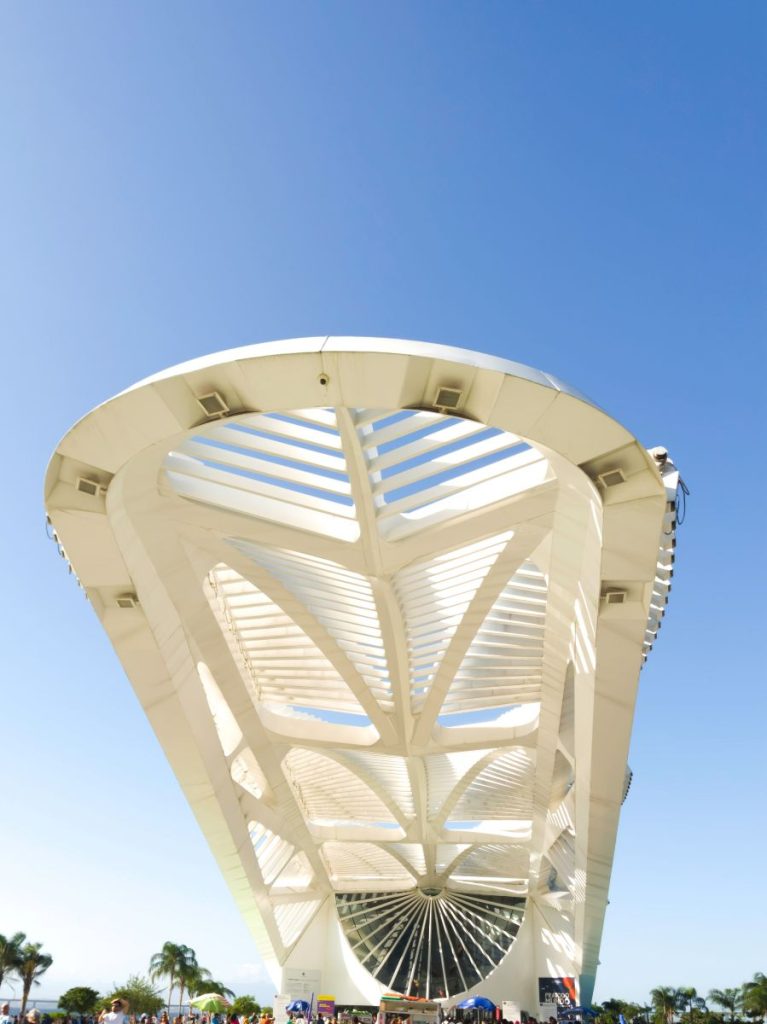
The Museu do Amanhã (Museum of Tomorrow), located in the recently inaugurated Porto Maravilha neighborhood, is an architectural marvel designed by world-renowned Spanish architect Santiago Calatrava. This interactive museum and futuristic thought center explores humanity’s challenges and opportunities in the face of climate change and technological advancements. The Porto Maravilha neighborhood itself has undergone a spectacular transformation, evolving from a dilapidated port area to a modern urban space with promenades, bike paths, and colorful graffiti. It’s proof of Rio de Janeiro’s ability to reinvent itself!
The Botanical Garden
Escape to a true green haven in the heart of Rio de Janeiro! The Jardim Botanico, founded in 1808, is not just a lush refuge; it’s one of the most important in South America, home to an incredible diversity of Brazilian and global flora. This park is a great place for a leisurely stroll. Imagine walking along paths lined with majestic imperial palm trees, exploring greenhouses brimming with vibrant orchids. You might even spot playful monkeys or hear the song of tropical birds. A breath of fresh air in the heart of the city.
Parque Lage
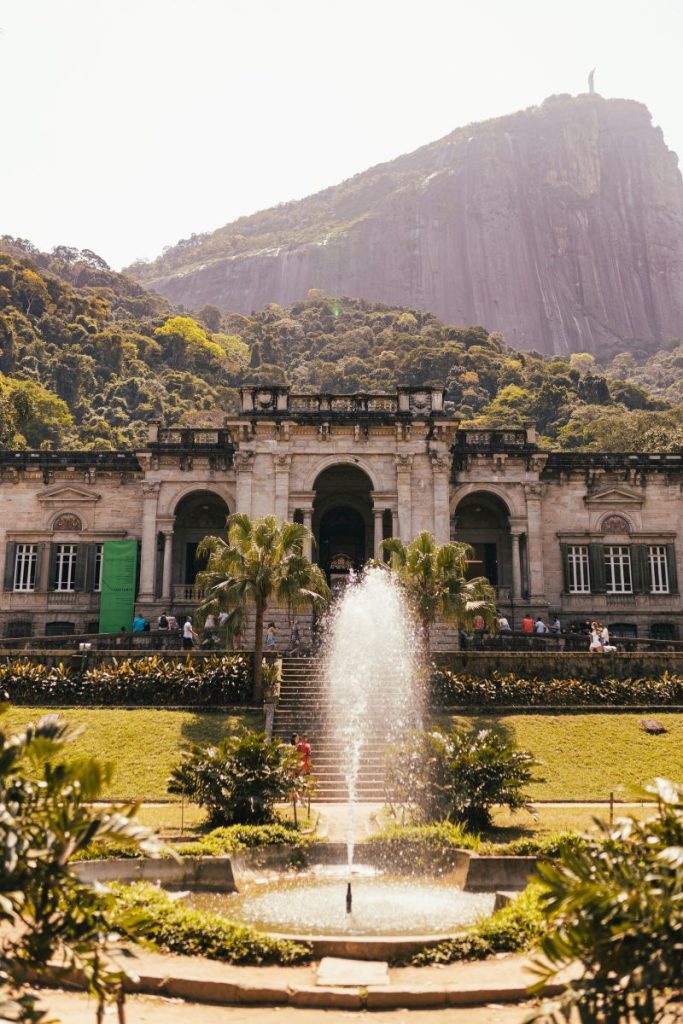
Parque Lage is an enchanting park that combines a historic mansion, a lush forest, and refreshing pools. Located at the foot of Corcovado, this park houses a unique café-restaurant, set in the mansion’s inner courtyard with a breathtaking view of Christ the Redeemer. It’s the perfect spot for a romantic stroll, a coffee break, or simply to admire the beauty of colonial architecture surrounded by exuberant nature.
Sunset at Arpoador
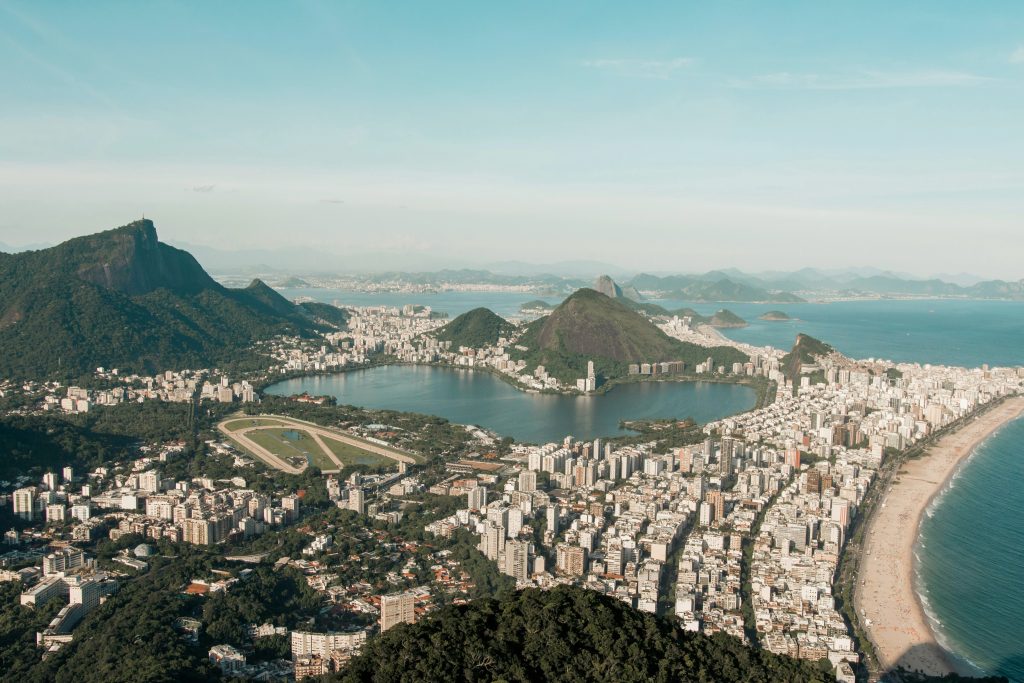
As the day winds down, join the joyous crowd at Pedra de Arpoador, a magical spot nestled between Ipanema and Copacabana. This is arguably the best time of day to experience Rio’s collective spirit. Watching the sunset here is a daily ritual where people spontaneously burst into applause as the sun dips behind the iconic Dois Irmãos mountains. The atmosphere is electric and joyful, and it’s a great place to to live a heartwarming experience that you absolutely can’t miss during your trip to Brazil.
Samba night at Pedra do Sal
For an authentic immersion in Brazilian music and dance, spend a samba night at Pedra do Sal. This historic place, located in the Saúde neighborhood (Pequena África), is considered the birthplace of samba in Rio de Janeiro. Every Monday evening, musicians gather to play samba outdoors, attracting dance enthusiasts and visitors who don’t hesitate to join the party. It’s a vibrant experience that plunges you into the heart of the culture, far from traditional tourist circuits.
Urban hike in Tijuca National Park
Welcome to the largest urban forest in the world, a spectacular natural escape in the heart of Rio de Janeiro. Tijuca National Park is a green lung, home to incredible biodiversity and offering numerous trails that lead to waterfalls, caves, and breathtaking views of the city. A hike here is one of the best things to do in Rio to connect with nature, and a great way to escape the urban sprawl.
Our tip? Start your hike early! With those Brazilian temperatures climbing high during the day, getting an early start means you’ll beat the heat and enjoy the park even more.
Historic Pequena África neighborhood
The Pequena África (Little Africa) neighborhood is a place of major historical and cultural importance in the metropolis. Indeed, Cais do Valongo was once the arrival point for millions of enslaved people from the African continent, and now a UNESCO World Heritage site. It’s a unique experience to understand the African roots of Brazil, and even more broadly of South America, and their profound impact on the continent’s music, dance, cuisine, and spirituality.


